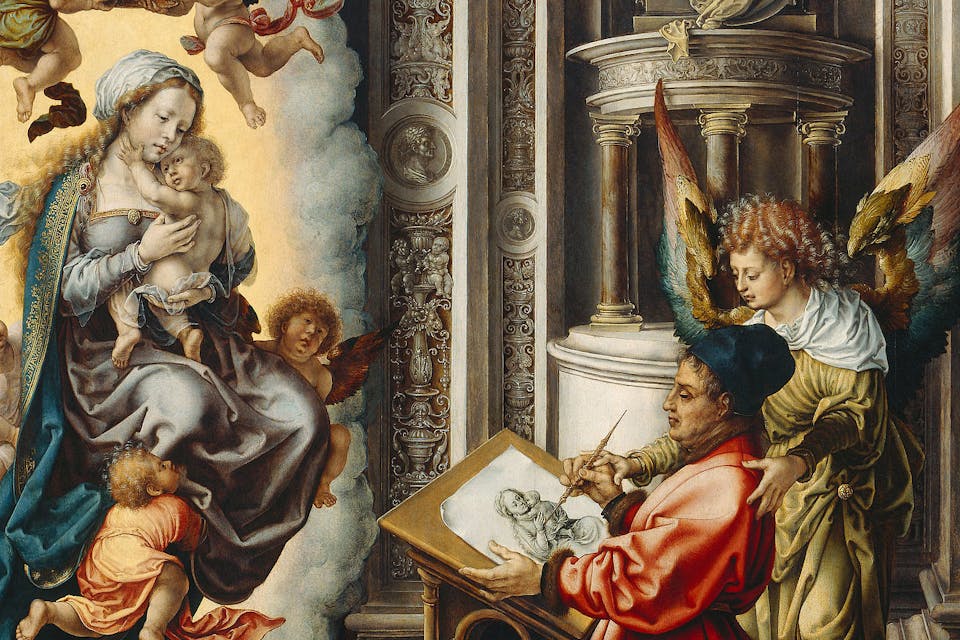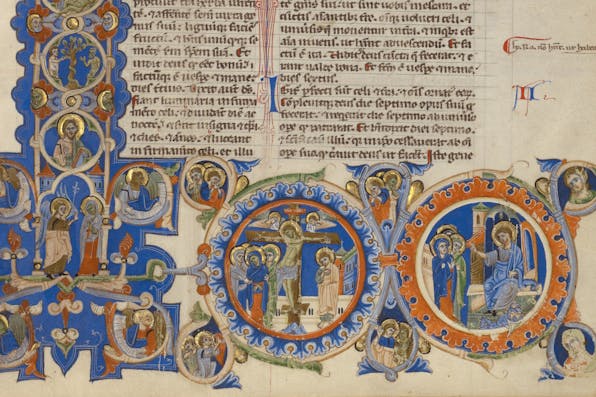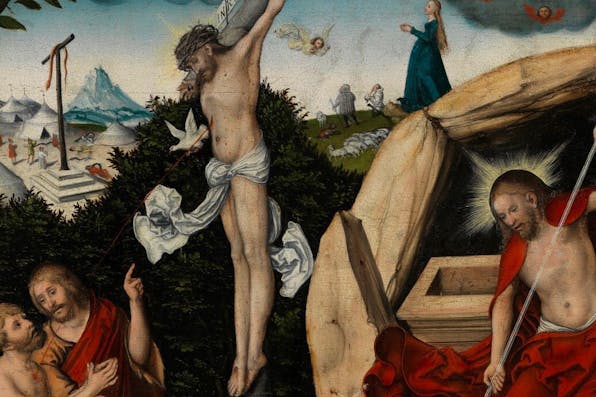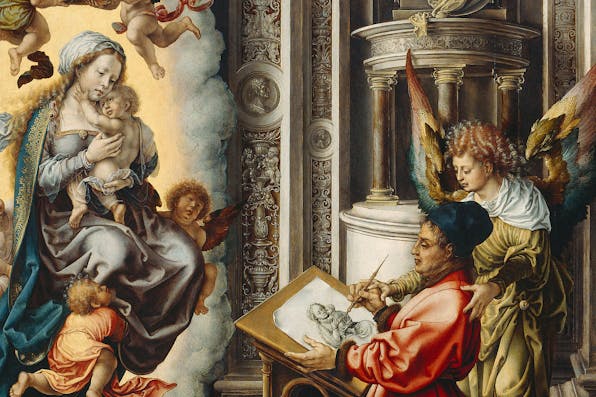
September 6, 2024
Christians Believe in Divine Art. Jews Believe in Divinely Inspired Art. What Does the Difference Mean?
In the Christian ideal of art, the artist is nowhere to be found. In the Jewish one, the artist is imbued with a divine spark and in special cases can achieve holiness.
In response to the growing debate over the role and implications of using artificial intelligence to create art, the headline of a story from the Harvard Crimson posed the question, “If it wasn’t created by a human artist, is it still art?” To this question, the response from the perspective of an important tradition in Christian art would be a resounding “yes!” Perhaps the greatest ideal ascribed to a vast body of Christian icons is that they would be considered to have been made not by human hands, but generated miraculously, as if by divine will and design. It is this very quality that gave them their power, that determined their truth, that made them worthy of being worshiped and copied. While the author of the article and the discussion over the emergence of AI-image generators do not draw on this Christian tradition, the lead question is very old, almost 2,000 years old. It is a question I was reminded of by Edward Rothstein’s and Larry Silver’s thoughtful responses to my essay.
Rothstein explores ways Jewish artists, especially within the context of manuscript illumination, diverged from the doctrinal interpretations that Christian artists imposed on imagery from the Hebrew Bible. Silver expands on the elaborate means through which Christian art manipulated Hebrew-biblical stories, transforming them into items on a typological menu. I’d like to reflect here on another aspect of the way in which the Western (i.e., Christian) artistic tradition was inspired by the model offered up by the Hebrew Bible, but ultimately veered dramatically from its predecessor’s values and ideas—namely, the role or character of the artist.
In my essay I touched on how the Hebrew Bible characterizes the work produced by Bezalel, the artist chosen by God to produce the Tabernacle and all its implements for the Israelites in the wilderness. The text makes clear that Bezalel and his God-appointed deputy Oholiab, son of Ahisamach, are not only technically talented but divinely inspired. The artists are characterized in such elevated terms because the Hebrew Bible considers art an echo of God’s holiness. The work carried out by Bezalel and Oholiab is described multiple times as “holy work”; not only are they called on to take on tasks that God charges Moses and the Israelites to do, but the object of the master craftsmen’s work serves as the dwelling place for God in the wilderness. There is, therefore, a connection established between the level of their skill and the importance of what they create: the makers of art must demonstrate the highest imaginable levels of human skill and creativity because the object of their creation must be worthy of accommodating the divine presence.


